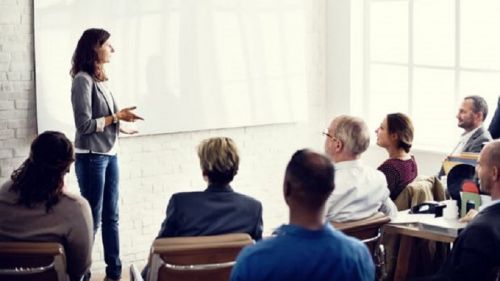Any type of work-related activity is likely to create risks of occupational exposure to a hazardous Physical or Chemical Agent. According to Greek Legislation (L.3850/2010) every employer must take appropriate measures to avoid or minimize the exposure of employees to hazardous agents. In any case, the exposure level must be lower [...]
+Services

According to ADR international agreement that has been adopted by Greek legislation all companies whose activities include road transport of dangerous goods or loading and unloading activities related to such transports, should employ a Dangerous Goods Safety Advisor. Those duties can be performed only by a Certified Engineer who has been [...]
+
Employee training assists the organization and employees in attaining diverse goals, such as improving morale, sense of security, employee engagement, and overall competencies necessary to perform a particular job. Process Engineering may develop and provide training programs in all types of organizations and activities. The programs are adapted to the needs [...]
+SEARCH
latest news
In workplaces worldwide, ensuring the safety of employees is paramount. Effective occupational safety training is not just a regulatory requirement; it's an ethical obligation and a sound business practice. However, designing and implementing such training programs require careful planning and execution to achieve their intended objectives.
An effective safety management program relies on the measurement of key performance indicators (KPIs) to ensure the well-being of employees and the overall success of an organization. Two fundamental types of indicators play a pivotal role in this process: Leading indicators and Lagging indicators.
The importance of gas detection for personal safety
Basic hazards from gases in the workplace include the risk of asphyxiation when oxygen levels are depleted, the potential for fires and explosions due to flammable gases, and the threat of chemical exposure leading to acute or chronic health issues. Additionally, toxic gases can pose immediate and long-term health risks, including respiratory problems, organ damage, and even death. Proper gas monitoring and safety measures are essential to mitigate these hazards and ensure a safe working environment.
In the ever-evolving business landscape, organizational knowledge stands as a lighthouse guiding companies towards efficiency, innovation, and competitive advantage. However, like the ocean's tides, managing this knowledge comes with its challenges. ISO 9001, a widely recognized quality management standard, offers valuable insights into effectively harnessing and documenting organizational knowledge.
Confined spaces are a common feature in various industries, from construction and manufacturing to agriculture and petrochemicals. These spaces can range from storage tanks and sewers to silos and underground vaults. While they serve essential purposes in these industries, they also pose significant risks to workers. It's crucial to understand and implement proper safety measures to protect lives and ensure compliance with regulations.
Personal Protection Equipment (PPE) plays a critical role in safeguarding the health and safety of workers in various industries.
From construction sites to healthcare facilities, PPE is designed to minimize the risk of injury or illness.
Emergency planning is the course of action a company takes to minimise the effects of an incident or crisis. The main objective of emergency planning is to reduce injuries, protect the community and maintain business continuity.
The safety culture of an organization refers to the collective attitudes, beliefs, and behaviours of its employees with regard to safety. It reflects the organization's commitment to safety and the value it places on the well-being of its employees and the community in which it operates.
A positive safety culture is characterized by open communication, shared responsibility, and a proactive approach to identifying and managing hazards.
A worker's chemical protection plan typically consists of several basic parts that are designed to ensure the safety and health of workers who may meet hazardous chemicals in the workplace. These parts may vary depending on the specific requirements and regulations of the workplace
What are the benefits?
The ISO 45001 is a globally recognized standard that helps organizations ensure the health and safety of their employees, as well as provide a safe working environment.
Creating an integrated management system (IMS) that aligns with the requirements of ISO 9001 (quality management), ISO 14001 (environmental management), and ISO 45001 (occupational health and safety management) can provide a number of benefits to an organization
Mission success is achieved by making good decisions based on a foundation of sound policies and procedures that address a project’s management and execution. Key drivers in achieving this are identifying priorities, obtaining resources, delivering the program and managing finances.
Supplier quality audits are the process of verifying that each of your suppliers is adhering to both industry standards as set by the law and independent organizations, as well as your own company and brand standards.
Audits are widely recognized as a pertinent part of doing business.
Cost of quality (COQ) is defined as a methodology that allows an organization to determine the extent to which its resources are used for activities that prevent poor quality, that appraise the quality of the organization’s products or services, and that result from internal and external failures.
The way you lead your team on health and safety can determine how safe your site is to work on (and the number of accidents, incidents and ill-health cases that happen) because:
'You can't manage what you can't measure' – Drucker
‘If you don’t know where you are going, chances are you will end up somewhere else’ – Yogi Berra
Measurement has been a problem in the safety field for years. Despite analyzing the standards over and over again, it has been difficult to come up with meaningful measures of safety performance.
Why people are not doing what they should!
The impact of performance problems may be very crucial for an organization.
The Human factor is the key to performance results. The aspects affecting work performance may be lack of training or motivation, behavioral and organizational issues etc..
Commissioning is a group of energized and dynamic tests that constitute verification that each “system or subsystem” is fabricated, installed, cleaned, and tested in accordance with design and the systems are ready for start-up.
In efficiently operating organizations, the Quality, Health & Safety, and Environment (QHSE) Auditing Process stand as pivotal pillars within improvement processes and the overarching management system.
Auditing serves as a beacon of assurance for management, offering a prime opportunity to both alert and advise on necessary improvement actions.
Leading and lagging indicators help enterprise leaders understand business conditions and trends. They are metrics that inform managers that they are on track to meet their organizational goals and objectives.
International training evaluation data reveals a concerning trend: most employees forget what they've learned within 24 hours of training. Termed "The Employee Forgetfulness Index," these findings pose significant challenges for Occupational Health & Safety (OHS).
But what drives this forgetfulness among employees?
Career
Available positions:
- Mechanical Engineer
- Civil Engineer, Mechanical and Structural Engineering
- Occupational Physician
Clients
find us
- 64, Apostolopoulou Str. 152 31 Halandri, Athens, Greece
- +30 210 6724258, +30 210 6724229
- Email PROCESS





